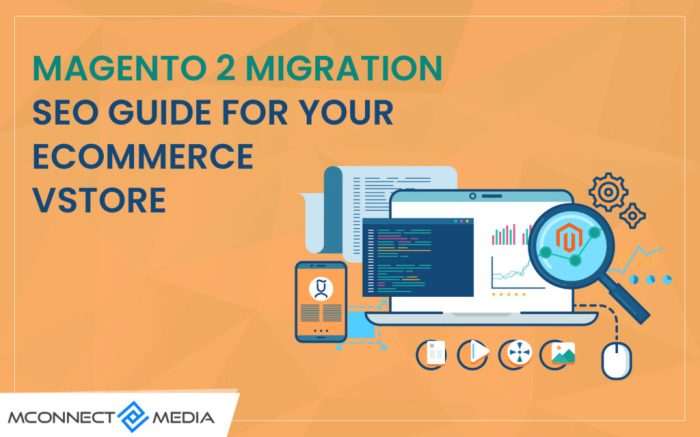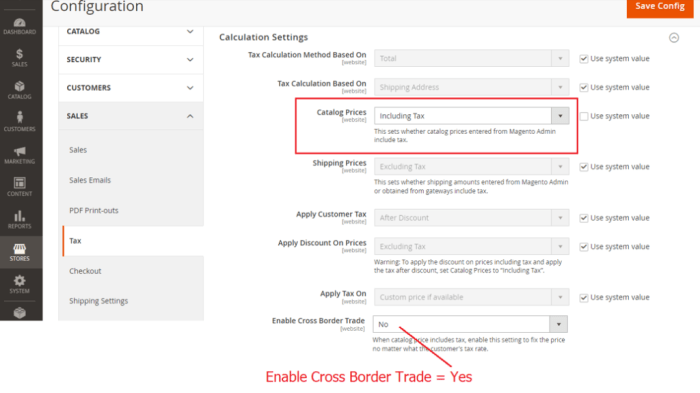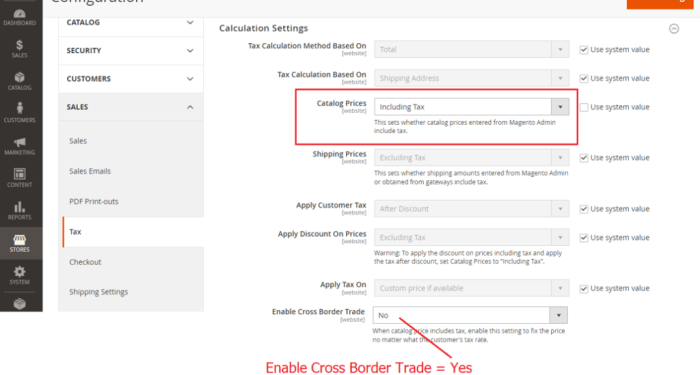Starting with “Cross-Border Ecommerce Solutions Using Magento 2”, the narrative unfolds in a compelling and distinctive manner, drawing readers into a story that promises to be both engaging and uniquely memorable.
The second paragraph provides descriptive and clear information about the topic, setting the stage for an informative discussion ahead.
Introduction to Cross-Border Ecommerce Solutions Using Magento 2
Cross-border ecommerce refers to the buying and selling of goods or services online between different countries. It involves transactions that take place across international borders, allowing businesses to reach a global audience and expand their market beyond their local region.
Using Magento 2 for cross-border ecommerce solutions is crucial due to its robust features and capabilities specifically designed to support international online sales. Magento 2 offers multi-language and multi-currency support, customizable tax rules, and seamless payment integrations, making it easier for businesses to cater to a diverse customer base worldwide.
The Benefits of Leveraging Magento 2 for International Online Sales
- Scalability: Magento 2 can handle high volumes of traffic and transactions, making it ideal for businesses looking to scale their operations globally.
- Customization: With Magento 2, businesses can customize their online stores to meet the specific needs and preferences of customers in different regions, enhancing the overall shopping experience.
- Integrated Shipping Options: Magento 2 offers integration with various shipping carriers and fulfillment services, streamlining the shipping process for cross-border orders and providing real-time shipping rates to customers.
- Advanced Reporting and Analytics: Magento 2 provides in-depth reporting and analytics tools that allow businesses to track sales performance, customer behavior, and market trends across different regions, helping them make informed decisions to optimize their international sales strategies.
Setting Up Magento 2 for Cross-Border Ecommerce

To enable cross-border transactions on Magento 2, certain configurations and customizations need to be implemented to cater to international markets effectively.
Configuring Magento 2 for Cross-Border Transactions
- Enable multiple currencies: Set up Magento 2 to support various currencies to allow customers to shop in their preferred currency.
- Localized pricing: Customize pricing based on different regions to account for taxes, shipping costs, and other fees specific to each country.
- Language options: Provide language support for different regions to enhance the shopping experience for international customers.
Best Practices for Customizing Magento 2 for International Markets
- Optimize shipping methods: Offer a range of shipping options to accommodate different delivery preferences and speeds across borders.
- Localized content: Tailor product descriptions, images, and promotions to resonate with the cultural preferences of specific regions.
- Payment gateways: Integrate popular payment methods used in various countries to facilitate seamless transactions for global customers.
Key Features of Magento 2 Supporting Cross-Border Ecommerce
- Multi-store functionality: Manage multiple stores for different regions within a single Magento 2 installation, allowing for centralized control and localized customization.
- Tax calculation support: Magento 2 offers built-in tax calculation capabilities to automatically apply taxes based on the customer's location, simplifying cross-border transactions.
- Geo-targeting capabilities: Utilize geolocation tools to direct customers to the most relevant store based on their location, enhancing the shopping experience.
Payment Gateways and Currency Support
When it comes to cross-border ecommerce solutions using Magento 2, payment gateways and currency support play a crucial role in facilitating international transactions. In this section, we will explore how Magento 2 handles different currencies and compare various payment gateway options available for Magento 2 to help you make informed decisions for your international sales.
Currency Handling in Magento 2
Magento 2 offers robust support for multiple currencies, allowing you to set up different currency options for your online store. You can configure base currency, allowed currencies, and currency rates to ensure accurate pricing and seamless shopping experience for customers worldwide.
- Set up base currency: Configure the primary currency in which your store will conduct transactions.
- Allowed currencies: Choose which currencies you want to accept for payments on your website.
- Currency rates: Magento 2 automatically updates currency exchange rates to reflect real-time values, providing customers with accurate pricing based on their selected currency.
Payment Gateway Options for Magento 2
Magento 2 offers a wide range of payment gateway options to cater to the diverse needs of cross-border ecommerce businesses. Here are some popular payment gateways that you can integrate with Magento 2 for international sales:
- PayPal:A widely used payment gateway that supports multiple currencies and offers a seamless checkout experience for customers around the world.
- Stripe:Known for its secure payment processing and support for various payment methods and currencies, making it an ideal choice for global transactions.
- Authorize.Net:A trusted payment gateway that provides secure payment processing and supports multiple currencies, ensuring a smooth payment experience for international customers.
Shipping and Logistics Considerations

When it comes to cross-border ecommerce, one of the biggest challenges businesses face is shipping and logistics. The complexities of international shipping can include high costs, customs regulations, varying delivery times, and potential issues with tracking orders. However, with the right strategies and tools in place, these challenges can be overcome to provide a seamless experience for global customers.
Magento 2 Solutions for Shipping and Logistics
Magento 2 offers a range of features and extensions to help businesses streamline their shipping and logistics processes for cross-border ecommerce. Some key solutions include:
- Multiple Shipping Methods: Magento 2 allows businesses to offer various shipping methods to customers based on their preferences and location.
- Customs Compliance: The platform helps businesses navigate customs regulations and ensure smooth clearance of international shipments.
- Real-Time Shipping Rates: With Magento 2, businesses can provide customers with accurate shipping rates in real-time, helping them make informed decisions at checkout.
- Order Tracking: Customers can easily track their orders from shipment to delivery, enhancing transparency and trust in the shipping process.
Tips for Optimizing Shipping Processes
To optimize shipping processes for international customers using Magento 2, consider the following tips:
- Offer Flat Rate Shipping: Providing flat rate shipping options can simplify the checkout process for customers and eliminate any surprises in shipping costs.
- Implement Address Verification: Use address verification tools to ensure accurate delivery addresses and reduce the risk of shipping delays or returns.
- Utilize Shipping Rules: Set up specific shipping rules based on order value, weight, or destination to automate shipping calculations and provide customers with cost-effective options.
- Partner with Reliable Carriers: Collaborate with reputable shipping carriers that offer competitive rates and reliable delivery services to enhance customer satisfaction.
Multilingual and Multicurrency Support
Offering a multilingual interface and multicurrency support on Magento 2 is crucial for catering to international customers and providing a seamless shopping experience across different regions.
Setting Up Multilingual and Multicurrency Support in Magento 2
To set up multilingual and multicurrency support in Magento 2, follow these steps:
- Install language packages: Install language packages for the desired languages in Magento 2 to enable multilingual support.
- Configure language options: Configure language options in the admin panel to allow users to select their preferred language.
- Enable multiple currencies: Enable multiple currencies in the system configuration to support different currencies for international transactions.
- Set up currency conversion rates: Set up currency conversion rates to ensure accurate pricing display for customers in their local currency.
- Customize language and currency switchers: Customize language and currency switchers on the frontend to make it easy for users to switch between languages and currencies.
Impact of Language and Currency Localization on User Experience
Language and currency localization play a significant role in enhancing the user experience in cross-border ecommerce:
- Improved communication: Offering content in the user's native language helps in better communication and understanding of product information.
- Enhanced trust: Displaying prices in the local currency builds trust with international customers and eliminates confusion during the purchase process.
- Personalized experience: Providing a personalized experience through language and currency preferences can lead to higher customer satisfaction and repeat purchases.
- Reduced barriers: Language and currency localization reduce barriers for international customers, making it easier for them to navigate the website and make purchases.
Tax Compliance and Regulations
When it comes to cross-border ecommerce transactions, tax compliance and regulations play a crucial role in ensuring smooth operations and legal adherence. Magento 2 provides features and functionalities to assist businesses in complying with international tax regulations, making it easier to navigate the complexities of different tax systems around the world.
Configuring Tax Settings in Magento 2
- Magento 2 allows you to set up tax rules based on the location of your customers, ensuring that the appropriate taxes are applied to each transaction.
- You can configure tax rates for different regions, countries, or even specific products, giving you the flexibility to comply with varying tax laws.
- The platform also supports automatic tax calculations, making it easier to handle tax requirements without manual intervention.
- Magento 2 enables you to display taxes inclusive or exclusive of prices, depending on the preferences of your target market.
Customer Support and Communication
Customer support plays a crucial role in the success of cross-border ecommerce operations. It is essential to provide effective communication with international customers to build trust and loyalty. Magento 2 offers various tools and extensions to enhance customer service for a global clientele.
Strategies for Effective Communication
Effective communication with international customers involves clear and concise messaging, language localization, and responsive support. Here are some strategies to consider when communicating with customers from different countries:
- Utilize language translation tools within Magento 2 to provide multilingual support for customers.
- Offer multiple communication channels such as live chat, email, and phone support to cater to diverse customer preferences.
- Provide detailed product information, shipping policies, and return procedures in multiple languages to ensure clarity for international customers.
- Implement personalized communication strategies based on customer location, preferences, and purchase history to enhance the overall shopping experience.
Magento 2 Extensions for Customer Service
Magento 2 offers a wide range of extensions to improve customer service for global clientele. These extensions can help streamline support processes, enhance user experience, and increase customer satisfaction. Some popular Magento 2 extensions for customer service include:
- Helpdesk Extension:Enables efficient ticket management and resolution for customer queries and issues.
- Live Chat Extension:Provides real-time support to customers, offering instant assistance and guidance during the shopping process.
- FAQ Extension:Allows merchants to create a comprehensive FAQ section to address common customer questions and concerns.
- Customer Feedback Extension:Enables businesses to collect feedback from customers to improve products and services based on customer input.
Wrap-Up
In conclusion, the discussion on Cross-Border Ecommerce Solutions Using Magento 2 offers valuable insights into the world of international online sales, highlighting the importance of leveraging Magento 2 for seamless cross-border transactions.
FAQs
What is cross-border ecommerce?
Cross-border ecommerce refers to online transactions conducted between buyers and sellers from different countries.
How does Magento 2 support cross-border transactions?
Magento 2 offers features like multilingual support, multicurrency options, and tax compliance tools to facilitate smooth cross-border operations.
What are the key challenges of cross-border shipping in ecommerce?
Challenges include customs regulations, shipping costs, and delivery times. Magento 2 helps address these complexities for global operations.
Why is multilingual and multicurrency support important in Magento 2 for international customers?
Providing multilingual interfaces and currency options enhances user experience and fosters trust among international customers.
How does Magento 2 assist in complying with international tax regulations?
Magento 2 offers tools to configure tax settings based on different regions, ensuring compliance with diverse international tax laws.












